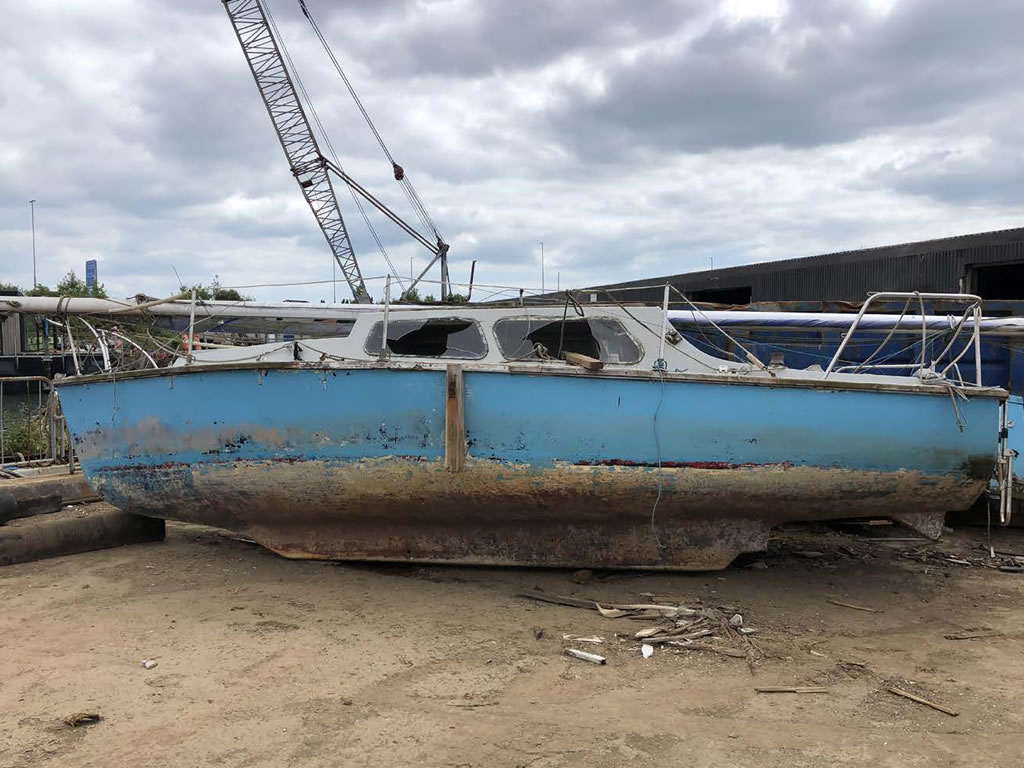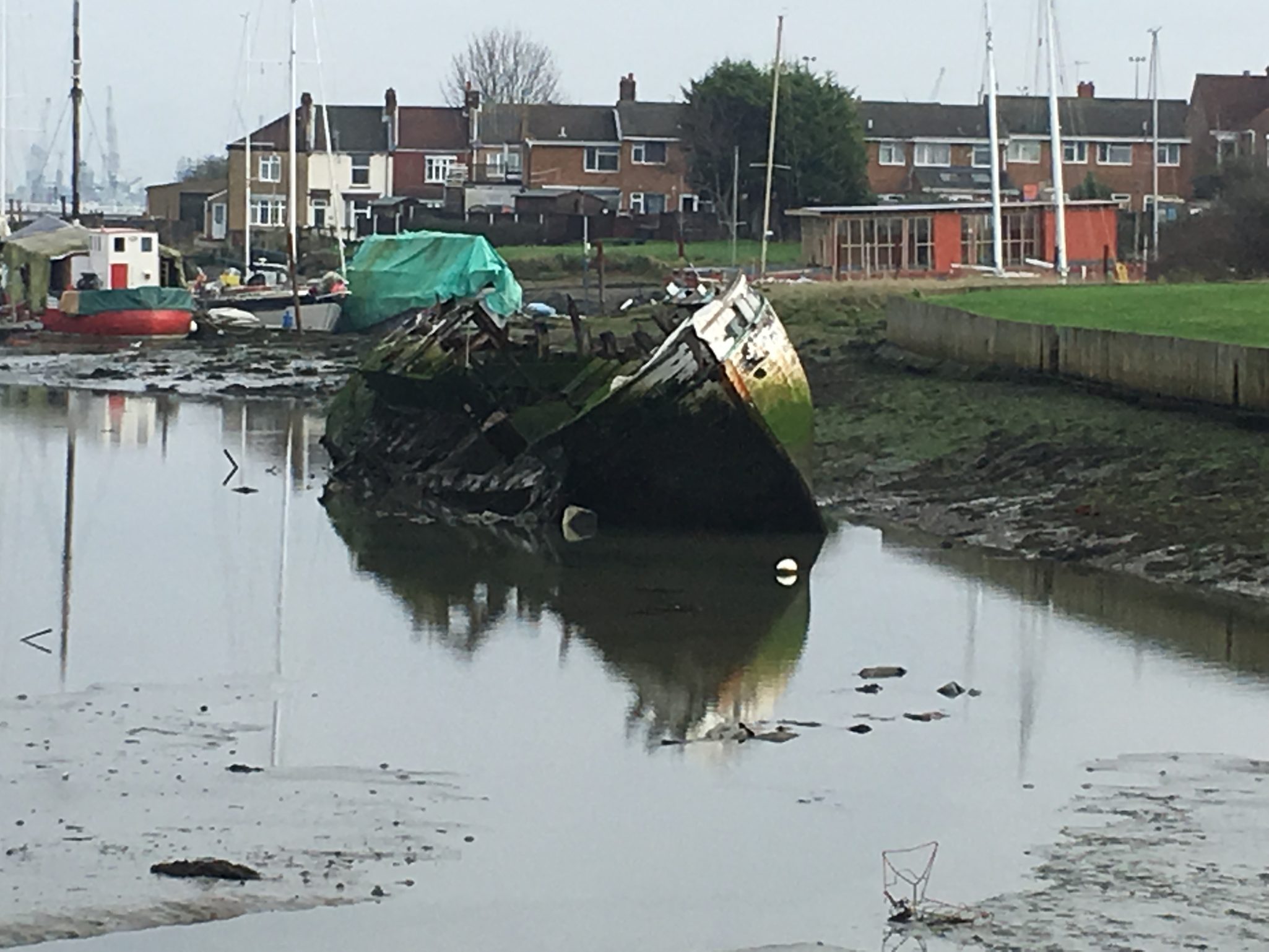American Problem With Abandoned Boats

By Travis Fain, WRAL statehouse reporter: View Original Article Here
RALEIGH, N.C. — A North Carolina task force dealing with boats abandoned in the wake of Hurricane Florence raised dozens of vessels from coastal waters, cleaned out hazardous materials, moved them out of navigation channels when needed, then sunk them again.
State legislators were astonished to hear it this week.
“Crazy,” said Rep. Pat McElraft, R-Carteret.
But this is the problem with ships damaged in the storms. Or rather, the problems: Owners often don’t want them. Sometimes owners can’t be found. The government doesn’t have a place to put them or the funding to scrap them. The state says local governments have authority over vessels. Local governments say they don’t have authority over public waterways – that’s a state and federal issue.
“There’s got to be a better way,” New Bern spokeswoman Colleen Roberts said Thursday. “After the storm, and even now, you can ride over the bridges in New Bern and see the tall masts of sail boats and other boating equipment in the rivers.”
State legislators who heard a report on the issue Tuesday seemed eager to consider new rules forcing owners to take more responsibility. A proposal to require liability insurance to cover at least some of the recovery costs was bandied about and set aside for later debate.
Meanwhile, an untold number of abandoned boats sit in the water and on the land. Fibreglass hulls will eventually “delaminate,” breaking up into smaller pieces, Christian Gillikin, of the Atlantic Coast Marine Group, told a legislative oversight committee.
Atlantic Coast is a contractor brought in by a state and federal task force to deal with abandoned boats after Florence. The immediate goal was to remove hazardous materials: Diesel fuel, emergency flares, other potential pollutants.
Gillikin couldn’t say how many boats his crews raised and cleaned up, only to sink them again. He estimated “tens and tens and tens” out of the 383 abandoned vessels identified after Florence.
He suggested that legislators put up $50,000 to assess what’s left of these vessels and what to do with them. He said it costs about $395 a foot to remove a boat, so a 32-foot vessel would cost $12,640. The most expensive part is raising the vessel, he told lawmakers.
Mike Sprayberry, the state’s emergency management director, set the wheels in motion for the task force, which was made up of representatives from the U.S. Coast Guard, the state Wildlife Resources Commission and the state Department of Environmental Quality. That group used a process called ESF 10, which keys in on a quick clean, as opposed to ESF 3, a more robust salvage operation.
“The coordinated response saw that no state entity could take responsibility for disposal, so ESF 10 made sense as the function for abandoned vessels due to the limited jurisdiction of coordinating agencies and limited resources of localities,” DEQ spokeswoman Megan Thorpe said in an email. “The focus was to eliminate environmental hazards.”
Sam Craft with the Wildlife Resources Commission said the group also moved boats out of channels and other sensitive areas, leaving them in places they wouldn’t be a hazard. They also tried to contact owners, but Gillikin said it’s not uncommon to find “bogus” identification numbers on boat hulls, making that difficult, if not impossible, in many cases.
Roberts said going after abandoned boat owners is part of the conversation in New Bern, but altogether, there’s “a little bit head scratching right now.”
Sprayberry said the state didn’t have the funding or the authority to simply haul damaged boats away.
“One of the things that I have to keep in mind … they’re private property, and they’re like cars,” he said. “I wouldn’t take cars and pay a fee to store them somewhere, and then pay more to tear them apart and put them in a landfill.”
Written By: Luke Edney
Luke completed a journalism degree in Brighton University and fortunately for us uses this in his communications, Facebook posts, Tweets and emails to tell all our enquirers and followers what we are up to. Without Luke we would be lost, he runs the office, keeps us organised and is like a terrier and never lets a tricky boat disposal job go un-photographed or Tweeted about.
He also manages all of our enquiries passing them to whoever in the team is the best suited to deal with it. We are teaching Luke how to drive a motorboat or sail a yacht so while he’s learning we suggest you keep out of the Solent!
When he’s not at work he’s a massive football fan (his Dad used to play for Portsmouth FC years ago) and seems to know everything there is to know about any player, anywhere. Next time you ring and he answers, think of a tricky football trivia question and ask him
Date Published: November 19, 2018
Last Modified: June 28, 2022
Related Articles
- Published On: January 21st, 2021
The Boatbreakers team were recently contacted by Nigel Robinson who was writing a piece for The Cruising Association about end of life boat disposal. As always our team were more than happy to discuss the many issue we face in [...]
- Published On: November 20th, 2018
A marina in Gosport has become a dumping ground for dumped boats. The problem of owners leaving a boat to rot in a boatyard is a growing issue.
- Published On: July 26th, 2017
Canada is the latest country to try and tackle the problem of abandoned boats littering their waterways. It was recently announced by Transport Canada that they will be looking for people to take part in their Abandoned Boats Program.
- Published On: September 10th, 2019
The problem of end-of-life boats is happening whether we like it or not. If we choose not to acknowledge them it will still be a problem all the same.




